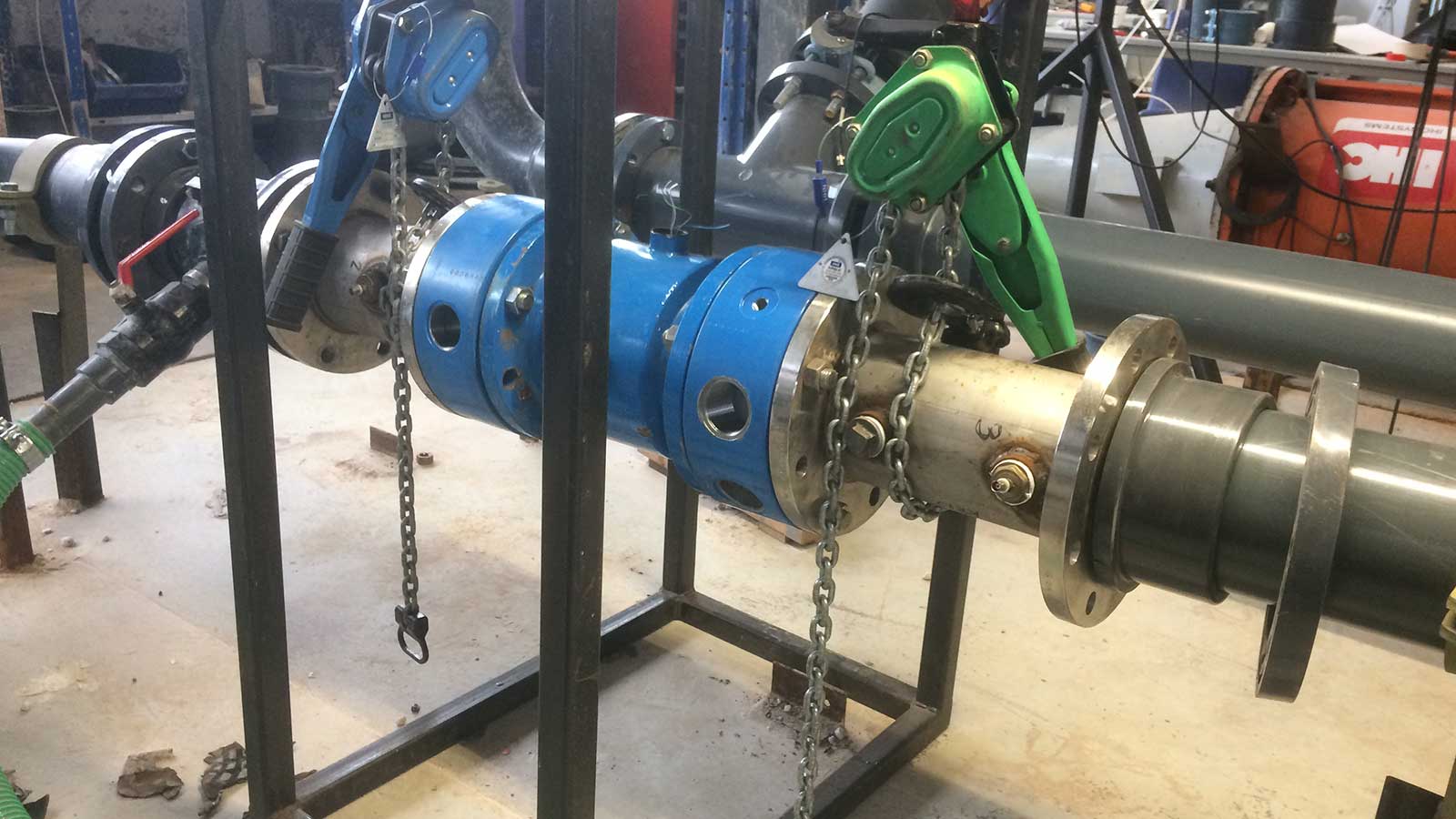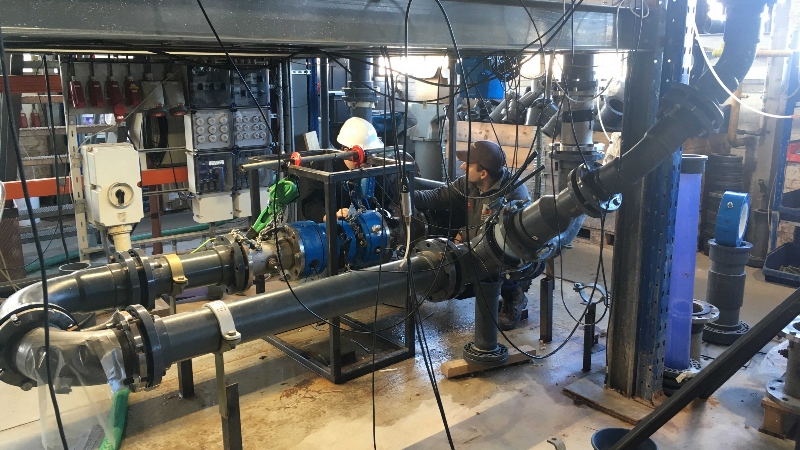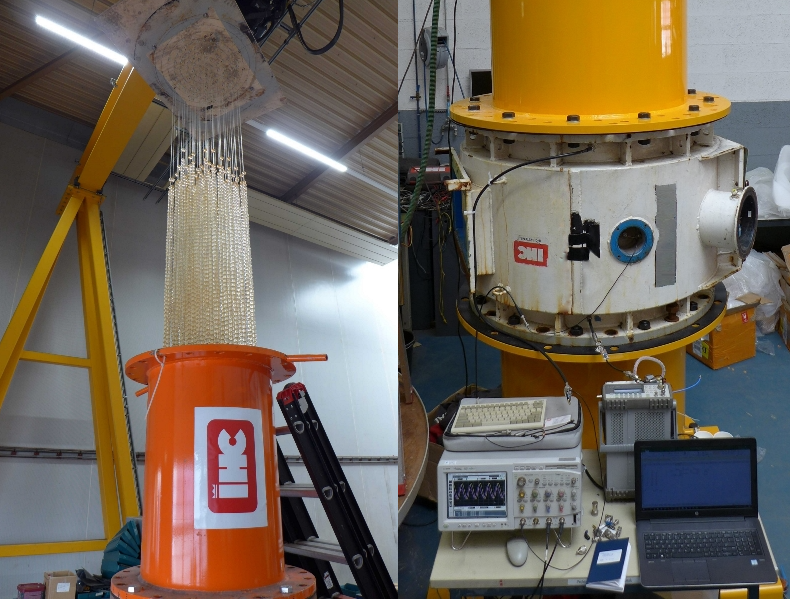Eureka moment in density measurement development offers cost savings and safer operations

In our last innovation blog about ‘Production Measurement’, we explained Royal IHC’s development of technology for the non-radioactive density measurement of dredging slurries to enable a greener, safer and more sustainable measurement solution.
It works by inducing harmless radio waves inside the slurry pipeline to measure the density. This technology was eventually introduced as a new product – the radio frequency (RF) density transmitter – which has since been installed onboard multiple dredging vessels.
To get the dredging production indication onboard, the density meter must be supplemented with a slurry velocity meter. Therefore, two measurement pipes are required to be fitted in the dredging system. The next step in the development of the RF density meter is to integrate the RF density measurement pipe with the velocity measurement pipe into one integrated measurement pipe. This results in a combined non-radioactive production measurement unit.
This integration has several advantages, including saving precious space onboard. Additionally, having one integrated production measurement unit saves engineering, installation and commissioning costs.
With these advantages in mind, we were extremely motivated to start with this innovation, and high levels of motivation and perseverance were certainly necessary, given the technical challenges we had to solve.
Challenges ahead
One might think that you can take a velocity meter and cut out the flanges where the antennas are placed for RF density measurement – in the same way as a standalone RF meter is constructed. In reality this is far from true, first and foremost because the measurement principle of velocity meter is very fragile and prohibits severe modifications.
The velocity meter relies on measuring a faint voltage, induced by a magnetic field generated by electromagnets. The inside of the pipe must be fully insulated and no additional structures should be introduced, as it would disturb the voltage. Also, from a practical point of view it was decided that the modifications needed to the velocity meter itself should be minimised.
On the other hand, a quirk of radio-wave engineering is that the insulation layer on the inside of the velocity meter will disturb and block the RF waves needed for the density measurement. We hence come to the question of how to generate the RF waves inside the velocity meter while keeping the latter almost unchanged.

Testing and breakout
When it comes to experiments, we have a professional soil and hydraulic transportation laboratory at our disposal in Kinderdijk. With the team’s help and hardware knowledge, we used the available pump circuit to create a controlled stream of slurry through our first small-scale prototype.
The prototype was a scrapped velocity meter converted to integrate and test different RF concepts for measuring the density. It was while working on one of these concepts that we realised that the reinforcement ring at the flange, which protects the insulation layer from being damaged by sand abrasion, could be used as our RF antenna.
This breakthrough opens another commercial opportunity, since velocity systems that are already operating in the field and equipped with such a ring, can be easily retrofitted to become a combined non-radioactive production measurement unit. This opens up a potential market of hundreds of units available for retrofitting.

Increasingly efficient and sustainable operations
To test the retrofitting we took another scrapped velocity pipe, and modified it to become a prototype of 800mm diameter. This time we made a stationary setup made of two spool pieces, simulating density in a dredging pipeline. We repeated the tests in fresh and seawater. The first results were positive and confirm that it is possible to convert a standard velocity pipe into an integrated density-velocity measurement system. The next step will be testing the prototype onboard a real dredger.
We have now achieved the goal of making a first large-scale prototype, which brings several benefits for our customers. Firstly, the already mentioned savings of space and costs. Secondly, since the liner of the velocity pipe is intact, the combined meter provides the highest achievable wear protection, when the liner is made of alumina tiles. Thirdly, every customer with a velocity meter in operation can be offered an upgrade to integrate the RF density measurement.
As a parallel project, the signal conditioner (which is supplied to handle the velocity and density measurement) was also upgraded and featured additional diagnostic and connectivity functionalities. By ensuring that every vessel is supplied with the ability to execute remote diagnostics, we are preparing ourselves for the digital data-driven era in dredging.
Ultimately, this innovation will take our customers one step closer to more efficient operations, and above all, a more sustainable performance.
Written by
Kris Zych
R&D Engineer

Want to know more about density measurement?
Fill in the form and our experts will help you.